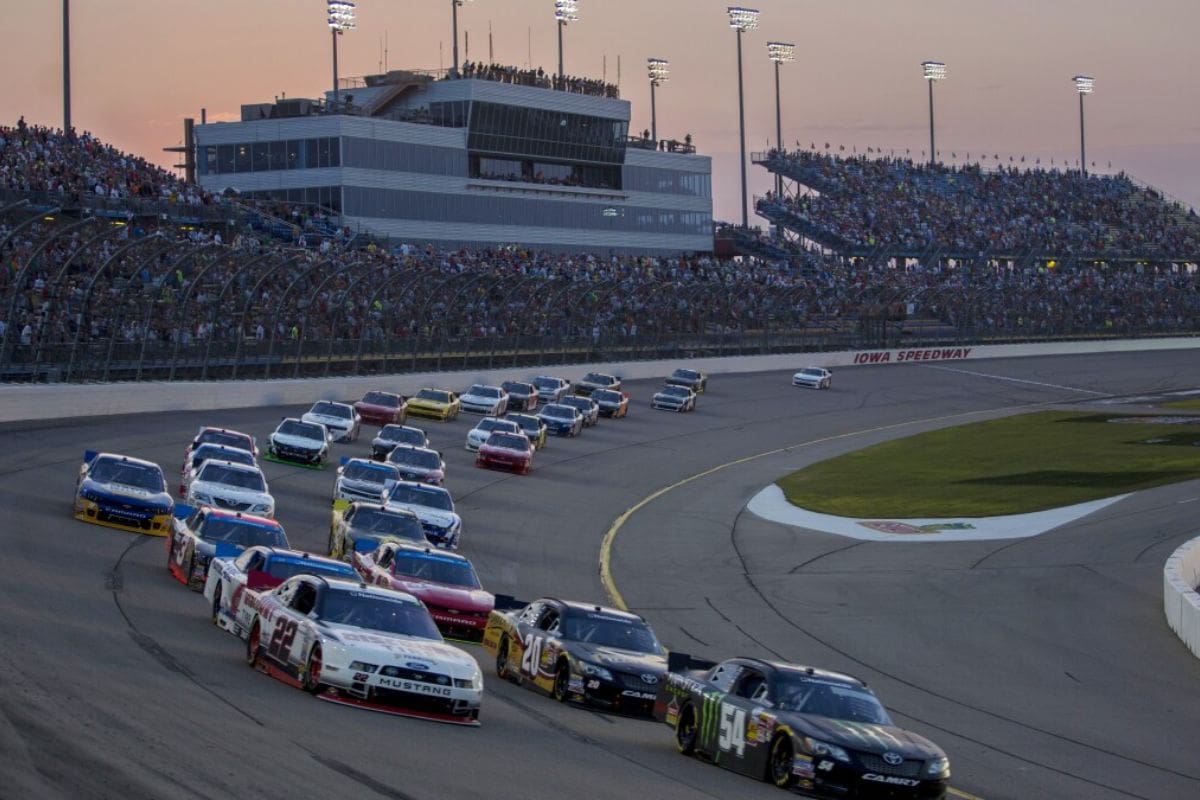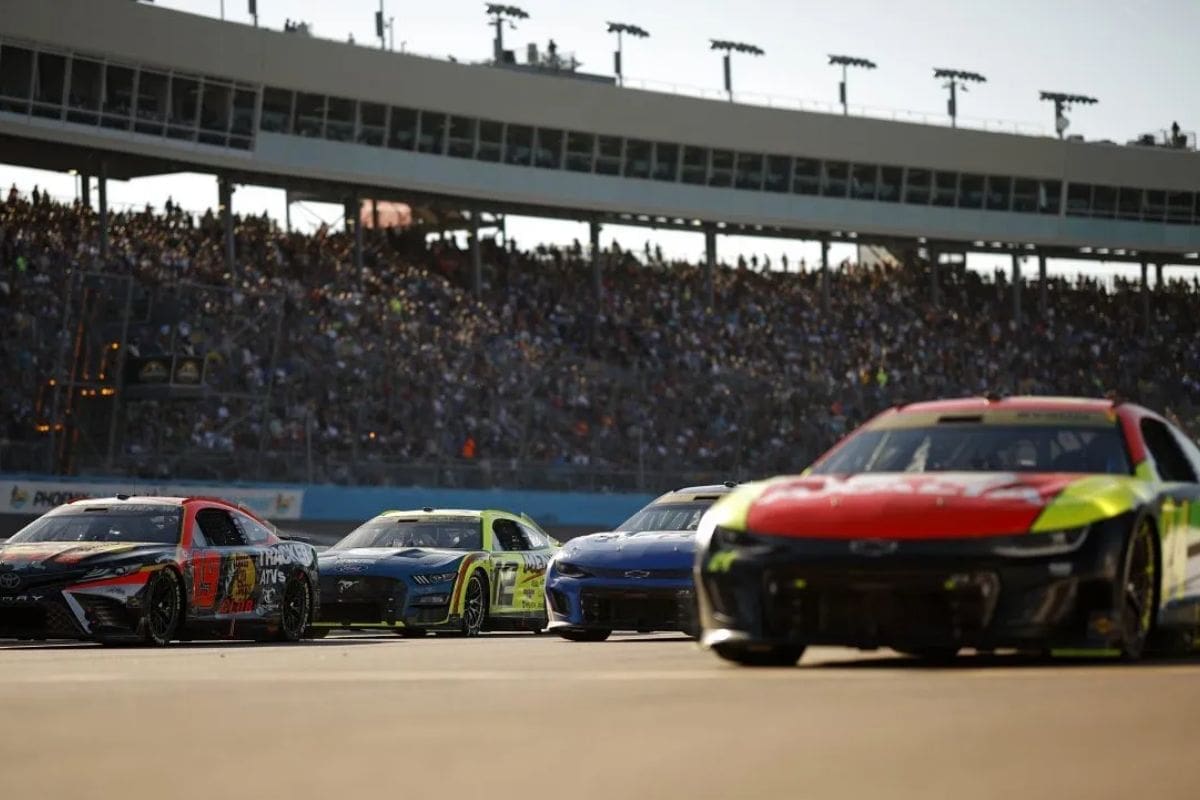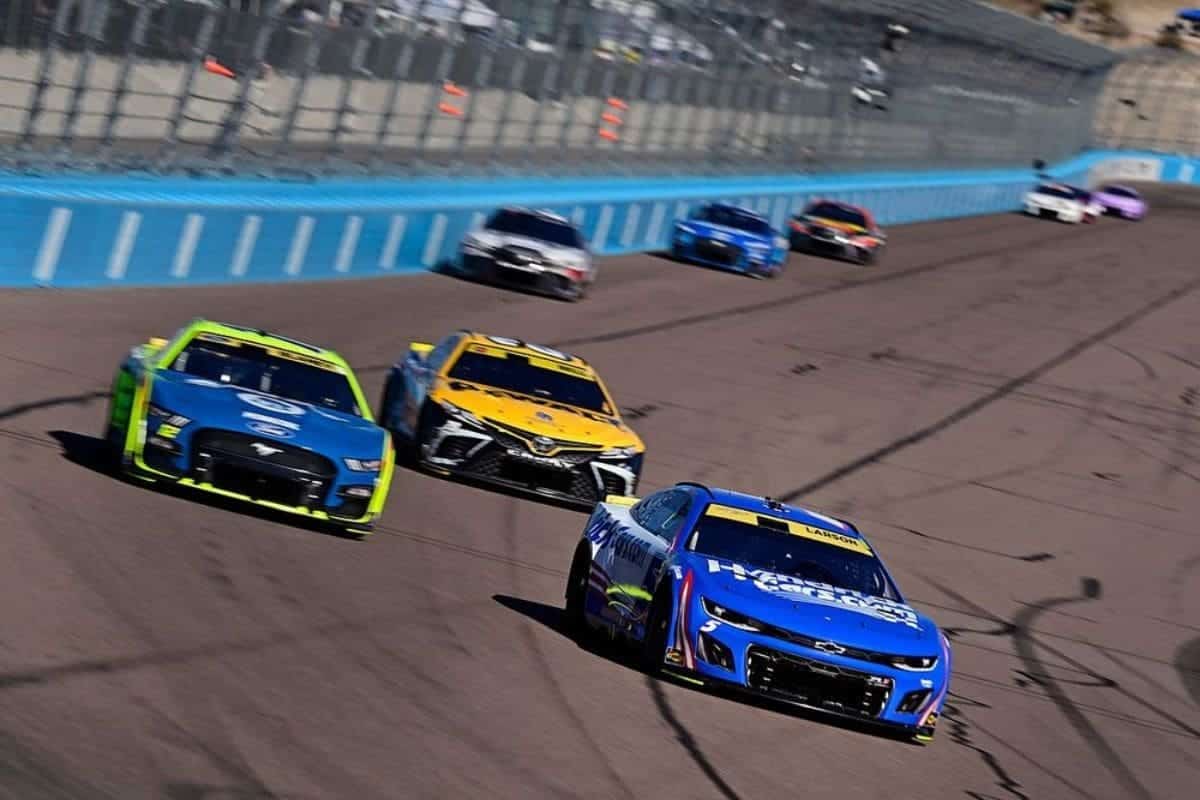Mike Joy Highlights Playoff System’s Role: Mike Joy’s analysis of NASCAR’s playoff system brings to light an intriguing aspect of modern racing: driver versatility. By requiring competitors to adapt to a wide array of track types and conditions, the playoff format enhances the level of competition and highlights the importance of consistent performance across diverse racing environments. This evolution in NASCAR’s competitive landscape highlights how drivers must now embody a blend of skill, strategy, and resilience. Joy’s insights invite a deeper examination into how these dynamics shape the careers of contemporary NASCAR drivers and influence the fan experience. How has this adaptability become a cornerstone of racing success?
Key Highlights
- The playoff system emphasizes driver versatility by requiring excellence across various track types.
- Mike Joy notes that the modern playoff format demands adaptability and strategic insights from NASCAR drivers.
- The revised playoff system enhances competitiveness, spotlighting drivers who excel in diverse racing conditions.
- Consistency and performance on different tracks are crucial for success in the playoff system.
- The playoff format ensures that drivers are tested on their ability to handle diverse racing challenges.
The Versatility of NASCAR Drivers
NASCAR drivers showcase remarkable versatility, maneuvering through a diverse range of track types—from short ovals and dirt tracks to superspeedways and intricate road courses—demonstrating their unparalleled adaptability and technical prowess. This multifaceted skill set is not merely a product of natural talent; it is a cultivated attribute born from rigorous training, strategic acumen, and an intimate understanding of varied racing dynamics.
Short tracks, often less than a mile in length, demand precision and aggressive maneuvering. Here, drivers must exhibit acute spatial awareness and deft handling to navigate the tight turns and frequent traffic.
Conversely, dirt tracks introduce an entirely different set of challenges, requiring mastery of throttle control and car balance on a surface that is inherently unpredictable and ever-changing.
Superspeedways, like the iconic Daytona International Speedway, stretch the limits of speed and aerodynamics. On these expansive tracks, drivers must not only possess the capability to maintain high speeds but also the strategic insight to draft effectively, leveraging the slipstream to conserve fuel and tires while positioning themselves for critical overtakes.

Winding road courses, such as Sonoma Raceway, test the drivers’ technical finesse and versatility. These tracks necessitate a blend of braking precision, cornering techniques, and acceleration control, often within the same lap. Mastery here is indicative of a driver’s ability to seamlessly shift between different racing disciplines.
This all-encompassing adaptability underlines the essence of a modern Cup Series driver as a jack of all trades. The continuous evolution and demands of varying track types confirm that only those with an exceptional breadth of skill can excel, thereby solidifying their status as some of the most versatile and accomplished drivers in the world.
Impact of the Playoff System
The playoff system, designed to intensify competition and spotlight driver excellence, has fundamentally reshaped the landscape of NASCAR by accentuating the necessity for adaptability and consistent performance across diverse track conditions. With its introduction, NASCAR has not only heightened the stakes but also demanded a wider skill set from its competitors. Drivers are now compelled to excel on a wide array of tracks, from short tracks and superspeedways to road courses and intermediate ovals. This thorough test of skill ensures that only the most versatile and adaptable drivers advance through the playoff rounds.
Mike Joy, a seasoned commentator for FOX, underscores that the playoff system has highlighted just how versatile NASCAR drivers can be. The system’s structure—culminating in the Championship 4—requires a meticulous balance of aggression and caution. Drivers must adeptly navigate the nuances of different track types and racing conditions, demonstrating proficiency in both high-speed strategy and technical finesse. This rigorous process filters out those unable to meet the diverse demands, guaranteeing that only the very best emerge on top.
Moreover, the playoff system has instilled a heightened sense of urgency and consistency. Each race in the playoff series carries significant weight, compelling drivers to maintain peak performance throughout the season. This relentless pursuit of excellence has raised the overall quality of competition, fostering an environment where adaptability is paramount. By demanding a sustained display of versatility, the playoff system not only crowns a champion but also celebrates the diverse skill set required to achieve such a prestigious title.
Evolution of NASCAR’s Competitiveness
Amid growing concerns over stagnant viewership and competitive predictability, the introduction of a revamped playoff system catalyzed a renewed vigor within the sport. The landscape of NASCAR, once dominated by the consistent excellence of drivers like Jimmie Johnson, who clinched four consecutive championships from 2006 to 2010, faced an existential challenge. This period of predictability, while showcasing immense talent, inadvertently led to dwindling audience engagement.
Recognizing the need for change, NASCAR’s revised playoff system redefined the competitive dynamics of the sport. The revised system introduced several key elements designed to foster competitiveness and unpredictability:
- Stage Points: Drivers can accumulate points during different stages of a race, incentivizing strong performances throughout, rather than solely at the finish.
- Emphasis on Wins: Victory in any race significantly enhances a driver’s playoff standing, encouraging aggressive and dynamic racing strategies.
- Top 16 Regular Season Finish: Consistent performance throughout the season is rewarded, ensuring that only the most competitive drivers advance.
- Diverse Winners: Following the last championship win by Johnson in 2016, the sport has seen seven different champions over the subsequent seven years.
These strategic adjustments have profoundly impacted NASCAR’s competitive landscape. By placing a premium on versatility and adaptability, the playoff system has mitigated the predictability that once plagued the sport. As a result, viewership has experienced a revitalization, driven by the anticipation of a more uncertain and thrilling championship race each year.
Mike Joy’s Perspective on Past and Present Racing
How has the shift from traditional point-based racing to the modern playoff system reshaped the strategic approaches of drivers and the general dynamics of NASCAR races? Mike Joy, a seasoned NASCAR race announcer, provides a compelling perspective on this transformative evolution.
View this post on Instagram
Joy underscores a significant departure from the past, where drivers like Ray Hendrick enjoyed the liberty to ‘cherry-pick’ races based on lucrative payouts and personal strengths. This approach allowed drivers to selectively participate in events, optimizing their chances of success without the burden of a season-long point strategy.
“They had a lot more freedom. Ray Hendrick back in the day, never ran for points except one year. He would cherry-pick and run whatever races paid the best. The way you went about racing back in the day was very different than the way you go about it now.”
“Well, it really changed for NASCAR, when NASCAR introduced the playoff system.”- Joy
This strategic flexibility diminished with the advent of NASCAR’s playoff system. Joy notes that the shift fundamentally altered the competitive landscape, compelling drivers to adopt a more comprehensive approach to the racing calendar. No longer could competitors afford to sidestep challenging tracks or inconvenient race dates. Instead, consistent participation and performance across the entire season became imperative. This change aimed to level the playing field, ensuring that the championship contenders demonstrated versatility and resilience in different racing conditions.

The playoff system also recalibrated the fan experience, as Joy points out. Fans now witness their favorite drivers battling it out in every race, enhancing the sport’s entertainment value and competitive integrity. The new format guarantees high stakes and heightened drama throughout the season, culminating in a thrilling playoff climax.
Modern NASCAR Drivers’ Versatility
Modern NASCAR drivers exemplify a remarkable degree of versatility, showcasing their ability to adapt and compete successfully across diverse motorsport domains. This adaptability is not only a validation of their innate talent but also of their rigorous training and strategic acumen. Historically, luminaries like Mario Andretti set benchmarks for cross-discipline success, but contemporary drivers are continuing this legacy with renewed vigor and broader horizons.
Kyle Larson stands as a prime example of this modern versatility. His triumph at the Rolex 24 Hours of Daytona and his audacious attempt at ‘The Double’—competing in both the Indianapolis 500 and the Coca-Cola 600 on the same day—underscore his multifaceted skill set. Larson’s exploits epitomize the modern NASCAR driver’s capacity to transcend traditional boundaries, demonstrating adeptness in both stock cars and open-wheel racing.
“Kyle Larson, he convinced his car owner in cup, Rick Hendrick, who has tremendous investment in Kyle Larson that he was a better driver the more he raced. And I think it’s going to be more up to the car owners than it is the drivers. How much of this opportunity that we see and how much of it that they embrace.” -joy
Mike Joy’s insights further shed the light on this trend, emphasizing how car owners’ willingness to support diverse racing endeavors enriches drivers’ comprehensive prowess. Joy’s commentary highlights that NASCAR drivers are not confined to the domain of stock car racing; rather, they are racers capable of excelling in varied motorsport formats.
“I think once you get outside of NASCAR, other sanctioning bodies are seeing that the drivers who wheel these cars at 190 miles an hour on Sunday, they’re really talented. They’re not just stock car drivers, they are racers and they can climb in just about anything with an appropriate acclimation period and be running right with the front runners. Talent finds a way.”- joy
Key aspects of modern NASCAR drivers’ versatility include:
- Participation in diverse racing formats: Competing in disciplines like Formula 1, IndyCar, and endurance races.
- Strategic adaptability: Quickly acclimating to different vehicles and racing conditions.
- Support from team owners: Benefiting from forward-thinking car owners who recognize the value of cross-discipline competition.
- Recognition from other sanctioning bodies: Earning respect and opportunities in different motorsport arenas.

News in Brief : Mike Joy Highlights Playoff System’s Role
The playoff system in NASCAR has fundamentally redefined the landscape of driver competitiveness by emphasizing versatility and adaptability across diverse track conditions. This format not only heightens competition but also fosters a more engaging fan experience through its unpredictability.
Mike Joy’s insights shows the evolution of NASCAR, highlighting how modern drivers must demonstrate consistent excellence and resilience to thrive. This paradigm shift highlights the necessity for well-rounded skill sets, marking a significant advancement in the sport’s competitive dynamics.
ALSO READ: Denny Hamlin Alerts NASCAR That Premier Driver May Miss Playoffs
